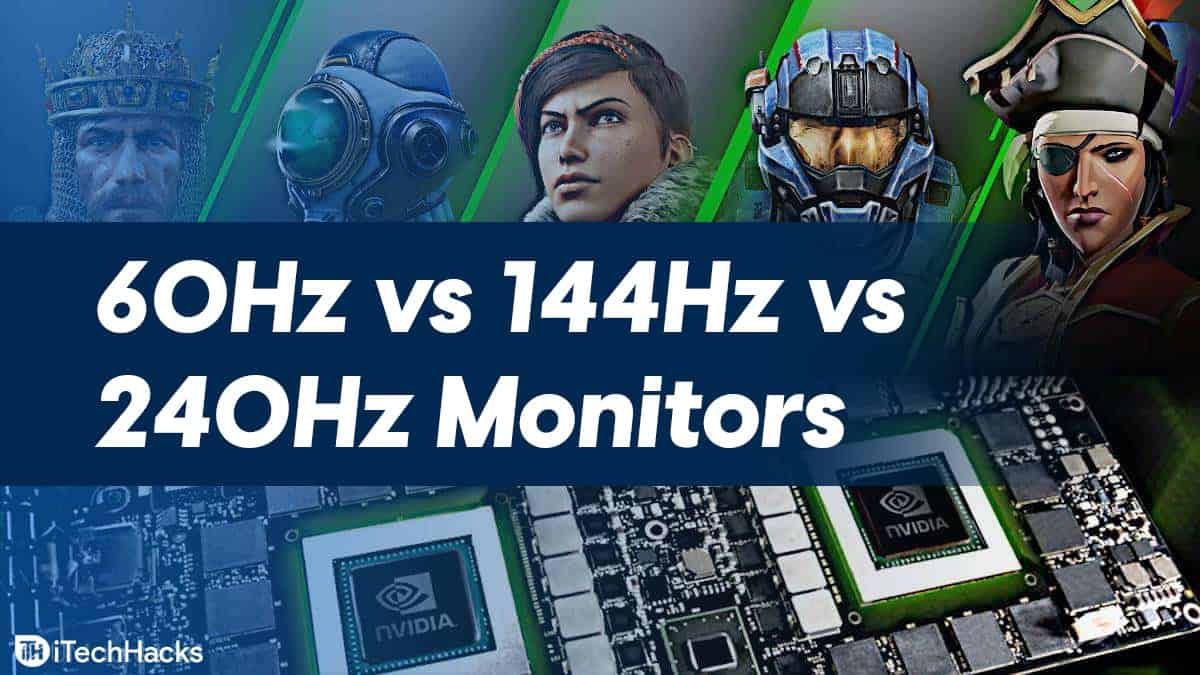If you’re a video game enthusiast or enjoy watching high-resolution videos, you’ve likely encountered terms like 144Hz or 240Hz monitors. Your current monitor was probably chosen based on your needs and budget at the time. The standard 60Hz monitor is commonly used, but with the growing popularity of gaming, many are shifting to high-frequency rate monitors for a competitive edge.
If you’re considering upgrading to a high-frequency monitor but are unsure which one to choose, this article will assist you. By the end, you’ll understand the differences between 60Hz, 144Hz, and 240Hz monitors and be able to decide which is best suited to your needs. But first, let’s explore what the term ‘Hz’ actually means.
What Is Hertz (HZ)?
In scientific terms, Hertz (Hz) is the unit of frequency. It indicates how many times your display refreshes every second. Simply put, a 120Hz monitor refreshes the image it displays 120 times per second, whereas a 60Hz monitor refreshes and renders 60 images per second.
Difference Between 60Hz vs 144Hz vs 240Hz Monitors
The higher the refresh rate the more up-to-date visual information you will get.
60 Hertz Display
The most widespread screens which are being utilized in displays have a refresh rate of 60 times per second, hence they are known as 60Hz display units.
We can not see the frames being altered since we are prepared to watch only 5 frames per second being changed at the most because of perception of vision.
Since a video is almost a series of pictures (or frames), a higher refresh rate can result in a smoother and glitch-free experience. This is particularly true in scenarios where there’s fast-paced movement or you’re manipulating objects on the screen, like gaming or scrolling through content on your screen.
Most of the movies and TV content are shot at 24FPS(frames per second), which means you technically don’t need a display that goes above 24Hz. But as per demand, the manufacturer started to provide output at 60FPS—making 60Hz the bare minimum all display manufacturers offer these days.
Why was there a need for displays with more than 60Hz refresh units?
Initially, gaming consoles used to offer a standard 60Hz output. Even at that time, the majority of games only managed to deliver merely half as many frames per second.
With the enormous improvement in hardware operation of this console generation starting with Sony PS5 and X-Box with series X consoles, we are practically leaving performance on the slab by not pairing it with a high refresh rate display. If your Monitor is a few years old, the chances are that it does not support the HDMI 2.1 specification will fall back to displaying 4K at 60Hz.
120 and 144 Hertz Display
120Hz is 120 times per second, So a 120Hz display refreshed twice as fast as a 60Hz panel, and 4x faster than 30Hz.
The 144Hz monitor display gives 144 frames per second and is preferred by competitive gamers. Faster update terms also mean lower latency and blurriness because the pixels are being refreshed more. HDR 10+ content is best viewed on high refresh displays.
As a standard user, 144Hz is of no need unless you are a heavy gamer so, the 120Hz displays are currently in use because these 120Hz displays do not give much strain to your eyes.
240 Hertz Display
240Hz is 240 times per second, So a 240Hz display refreshes twice as fast as a 120Hz panel and 4x faster than 60Hz.
While there is a fight among 120Hz, 144Hz, and 240 Hz display in the case of gamers, there’s no need for a 240Hz monitor unless you want to future-proof your system. In short, the jump from 144Hz to 240Hz is not noticeable.
240Hz won’t give you an advantage over your competitors, nor will it make you a more significant player. Still, it will make the gameplay more desirable and immersive.
FAQs
Is 240Hz a lot better than 144Hz?
Well on comparing these two, you won’t see much difference with your eyes. The 240Hz Monitor will give you a smooth gaming experience. Still, there is no need to buy one if you cannot utilize your present 144Hz Monitor completely. You will also have to upgrade your PC to fully use your 240Hz Monitor if you plan to buy one.
Is there a big difference between 60Hz and 144Hz monitors?
Yes, you will see a massive difference in picture quality and smooth gaming on comparing these two monitors.
Can the human eye notice the difference between 144Hz and 240Hz displays?
As said earlier, we can’t see much difference between the two, but it is noticeable. However, the difference is not very clear.
RELATED GUIDES:
- How To Fix PS4 Controller Not Connecting To PS4 Console
- How To Fix PS4 Controller Flashing White Light
- Fix DX11 Feature Level 10.0 Is Required to Run the Engine
Conclusion
Hopefully, this article has described the critical difference between the various types of monitors with different frame rates. Now, you can easily choose one which best fits your need. This is ultimately one’s choice to select which Monitor they should buy. Suppose you have a strict budget, or you play games casually.
In that case, a fast refresh rate monitor probably isn’t going to make much difference to your gaming experience. On the other hand, if you are a competitive gamer and can’t bear any visible lapse, you should opt for a high refresh rate monitor and keep in mind that your PC can handle the upgrade and fully utilize the display.


